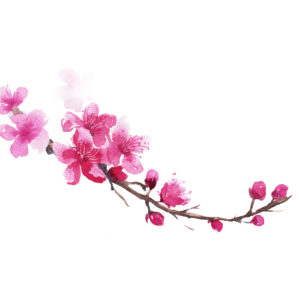1. Since ancient times, the world’s civilizations, including the Egyptians and Mesopotamians, have sprung up alongside rivers.
太古 (たいこ) の 時代 (じだい) から、 エジプト や メソポタミア を はじめ、 世界 (せかい) の 文明 (ぶんめい) は 川沿 (かわぞ)い に 発展 (はっ てん) して き ました。
2. Rivers were not only used as transport routes, but also played an indispensable role in the development of agriculture.
川 (かわ) は 輸送路 (ゆそうろ) と して 使 (つか) われた だけ で なく、 農業 (のうぎょう) の 発展 (はってん) に かかせ ない 役割 (やくわり) も 担 (にな)って い ます。
3. This is because inundations make the soil fertile. On the other hand, as great floods bring disaster, countermeasures have been sought.
氾濫 (はんらん) が 肥沃 (ひよく) な 土地 (とち) を 作 (つく)り 出 (だ)して きた から です。 その 一方 (いっぽう) で、 大洪水 (だいこうずい) は 大 (おお) きな 被害 (ひがい) を もたらす ため、 対策 (たいさく) が 求 (もと)められ ました。
4. In Japan too, flood control has been important since ancient times. TAKEDA Shingen, a warlord from the Warring States period (16th century), is known for building an embankment (now called Shingen Tsuzumi) in his domain (present-day Yamanashi Prefecture).
日本 でも 治水対策(ちすいたいさく) は 昔 (むかし) から 重要 (じゅうよう) でした。 戦国時代 (せんごくじだい) (16 世紀 せいき )の 武将 (ぶしょう) 、 武田信玄 (たけだしんげん) は、 自国 (じこく) (現在 げんざい の 山梨県 やまなしけん ) に、 信玄提 (しんげんづつみ) と 呼 (よ) ばれる 堤防 (ていぼう) を 造 (つく)った こと でも 知 (し)られて い ます。
5. In those days, countermeasures involved changing the course of rivers by harnessing the power of nature.
この 頃 (ころ) の 治水対策 (ちすいたいさく) は、 自然 (しぜん) の 力 (ちから) を 利用 (りよう) して 川 (かわ) の 流 (なが)れ を 変 (か)える という もの でした。
6. In the Meiji era (19th century), businessman KINPARA Meizen invested his private fortune into building a dyke along the Tenryu River. He then proceeded to plant trees in the mountains upstream to prevent flooding.
明治時代 (めいじじだい) (1 9 世紀せいき) の 実業家 (じつぎょうか)、 金原明善 (きんぱらめいぜん) は、 私財 (しざい) を 投 (な) げ 打(う)って 天竜川 (てんりゅうがわ) に 堤防 (ていぼう) を 築 (きず)き ました。 その 後 (ご) 、 洪水 (こうずい) を 防 (ふせ)ぐ ため に 上流 (じょうりゅう) の 山 (やま) へ の 植林 (しょくりん) を 進 (すす)め ました。
7. Along the banks of rivers in Japan like the Sumida River, there are many famous cherry blossom viewing spots.
隅田川 (すみだがわ) など、 日本の 川 (かわ) 沿 (ぞ)い の 土手 (どて) には 桜 (さくら) の 名所 (めいしょ) が 数多 (かずおお)く あり ます。
8. It is said that these cherry blossoms were planted to be a flood control measure, as they would attract many visitors who would step on the banks making them solid.
これ は、 大勢 (おおぜい) の 花見客 (はなみきゃく) を 呼 (よ)び 込 (こ)み 土手 (どて) を 踏 (ふ)み 固 (かた)めれ ば 治水対策 (ちすいたいさく) に なる と して 植 (う)え られた と いわれて い ます。
9. Dam construction has become the main weapon against flooding in modern times. Initially many dams provided hydroelectric power, but the need for this decreased as nuclear power plants became more commonly used.
近代 (きんだい) の ダム 建設 (けんせつ) は 治水対策 (ちすいたいさく) が 主流 (しゅりゅう) と なり ました。 多 (おお)く の ダム は 当初 (とうしょ) 、 水力発電 (すいりょくはつでん) を 行 (おこな)って い ました が、 原子力 (げんしりょく) 発電所 (はつでんしょ) が 普及 (ふきゅう) する と、 必要性 (ひつようせい) は 低 (ひく) く なり ました。
10. Alongside this, residents’ opposition to the construction of dams grew, making them a political hot potatoes. Yamba Dam in Gunma Prefecture became a symbol of this controversy.
それに 伴 (ともな)い、 ダム の 建設 (けんせつ) に 対 (たい)して 住民 (じゅうみん) の 反発 (はんぱつ) が 高 (たか) まり、 政治問題 (せいじもんだい) へ と 発展 (はってん) し ました。 群馬県 (ぐんまけん) の 八場 (やッんば) ダム は その 象徴 (しょうちょう) です。
11. In the beginning, the construction budget was 211 billion yen, but due to planning changes, it is said that the total expenditure, including related construction, would exceed 500 billion yen.
当初 (とうしょ) の 事業費 (じぎょうひ) は 2 ,110億 (おく) 円 (えん) でした が 計画変更 (けいかくへんこう) で、 関連事業 (かんれんじぎょう) を 含 (ふく)める と 総事業費 (そうじぎょうひ) は 5 ,000 億 (おく) 円 (えん) を 超 (こ)える と いわれ ます。
12. By the time the Yanba Dam was completed, it was established that bureaucrats had ties to a number of the corporations involved and they were criticized for bid rigging.
八場 (やッんば) ダム が 完成 (かんせい) する まで に 官僚 (かんりょう) が かかわる 関連会社 (かんれんがいしゃ) が いくつ も つくられ、 ダム 事業 (じぎょう) は 利権 (りけん) の 事業 (じぎょう) だ と 批判 (ひはん) され ました。
13. In July 2020, unprecedented rainfall in southern Kyushu caused the Kuma River in Kumamoto Prefecture to overflow, leading to extensive damage. The construction of the Kawabe River Dam, which was to be built on a tributary of the Kuma River, had been halted in 2009.
2020 年 (ねん) 7月 (がつ) 、 南九州 (みなみきゅうしゅう) の 記録的 (きろくてき) な 大雨 (おおあめ) で 熊本県 (くまもとけん) の 球磨川 (くまがわ) が 氾濫 (はんらん) し、 大 (おお)きな 被害 (ひがい) が 出 (で) ま した。 球磨川 (くまがわ) 支流 (しりゅう) に 建設 (けんせつ) 予定 (よてい) だった 川辺川 (かわべがわ) ダム の 建設 (けんせつ) は 2009 年 (ねん) に 中止 (ちゅうし) されて い ます。
14. After this disaster, some people said that the Kawabe Dam had been necessary after all.
この 水害 (すいがい) を 受 (う)け、 川辺川 (かわべがわ) ダム は やはり 必要 (ひつよう) だった という 声 (こえ) が 上 (あ)がり ました。
15. Other people said it could not have prevented the disaster even if the dam had been constructed.
その 一方 (いっぽう) で、 ダム が 建設 (けんせつ) されて いた と して も 水害 (すいがい) は 防 (ふせ)げ なかった と いう 意見 (いけん) も あり ます。
16. They pointed out that this continuous heavy rainfall could not have been predicted and that the planned dam was only designed to control floods based on data from 50 years ago.
今回 (こんかい) の 連続的 (れんぞくてき) な 激 (はげ)しい 大雨 (おおあめ) は 予測 (よそく) できなかった、 また、 計画 (けいかく) されて いた ダ ム は 5 0 年 (ねん) 前 (まえ) の データ た に 基 (もと)づいた 治水対策 (ちすいたいさく) に 過 (す)ぎ ない と 指摘 (してき) して い ます。
17. The long-term trend of increasing heavy rainfall is thought to be due to global warming. Flooding is expected to increase not only in Japan but also in other parts of the world.
長期的 (ちょうきてき) な 大雨 (おおあめ) の 増加傾向 (ぞうかけいこう) は 地球温暖化 (ちきゅうおんだんか) の 影響 (えいきょう) と 見 (み)られて い ます。 洪水 (こうずい) は、 日本 に 限 (かぎ) らず 世界各地 (せかいかくち) で 増 (ふ)える と 予測 (よそく) されて い ます。
Source: Hiragana Times, No. 407, p.13-15


